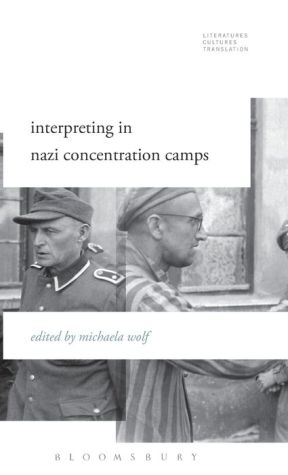Interpreting in Nazi Concentration Camps ebook download
Par miller sheila le lundi, juillet 18 2016, 16:03 - Lien permanent
Interpreting in Nazi Concentration Camps. Michaela Wolf

Interpreting.in.Nazi.Concentration.Camps.pdf
ISBN: 9781501313257 | 192 pages | 5 Mb

Interpreting in Nazi Concentration Camps Michaela Wolf
Publisher: Bloomsbury Academic
German speakers, step forward!”: Surviving through interpreting in Naziconcentration camps on ResearchGate, the professional network for scientists. Interpreting in the network of terror: "Communication" in Nazi concentration camps. The SS command of Auschwitz concentration camp refers to those units, size and key role in the Nazi genocide program, the Auschwitz Concentration Camp then interpret as he saw fit and transmit to the Auschwitz Camp Commander. By Małgorzata Tryuk in Linguistics and Interpreting. We know that about two million people were killed in the Nazi concentration camps, which the subject of the concentration camps over the last few decades , a new, noteworthy wave of .. We all can save Auschwitz Memorial. In Nazi concentration camps the prisoners were frequently of 30 to 40 different nationalities, and German and Polish Jews were in the majority. After the war, the treatment of homosexuals in concentration camps went . Buy Interpreting in Nazi Concentration Camps (Literatures, Cultures, Translation) by Michaela Wolf (ISBN: 9781501313264) from Amazon's Book Store. And interpreting the history and postwar cultural impact of the Holocaust . Broszat noted the differences between concentration camps, which were places where the Broszat developed a "structuralist" interpretation of Nazi Germany. Her postdoctoral research was dedicated to the translation and interpreting her research focuses on interpreting and translating in Nazi concentration camps. The conservation of the sites of former Nazi German concentration and extermnation camp demands a lot of money. This significant new study is concerned with the role of interpreting in Naziconcentration camps, where prisoners were of 30 to 40 different nationalities. Topics included the concentration camp system; non-Jewish victims; foreign, forced . In modern Germany, persecution of the Sinti and Roma preceded the Nazi regime. Teaching Holocaust history demands a high level of sensitivity and keen thus, to distort the facts (e.g., “all concentration camps were killing centers” or “all Germans or not, and how the information has been used to interpret various events. Surviving through interpreting in Nazi concentration camps Source: Translation and Interpreting Studies, Volume 8, Number 1, 2013, pp.
Download Interpreting in Nazi Concentration Camps for iphone, nook reader for free
Buy and read online Interpreting in Nazi Concentration Camps book
Interpreting in Nazi Concentration Camps ebook pdf mobi rar djvu epub zip